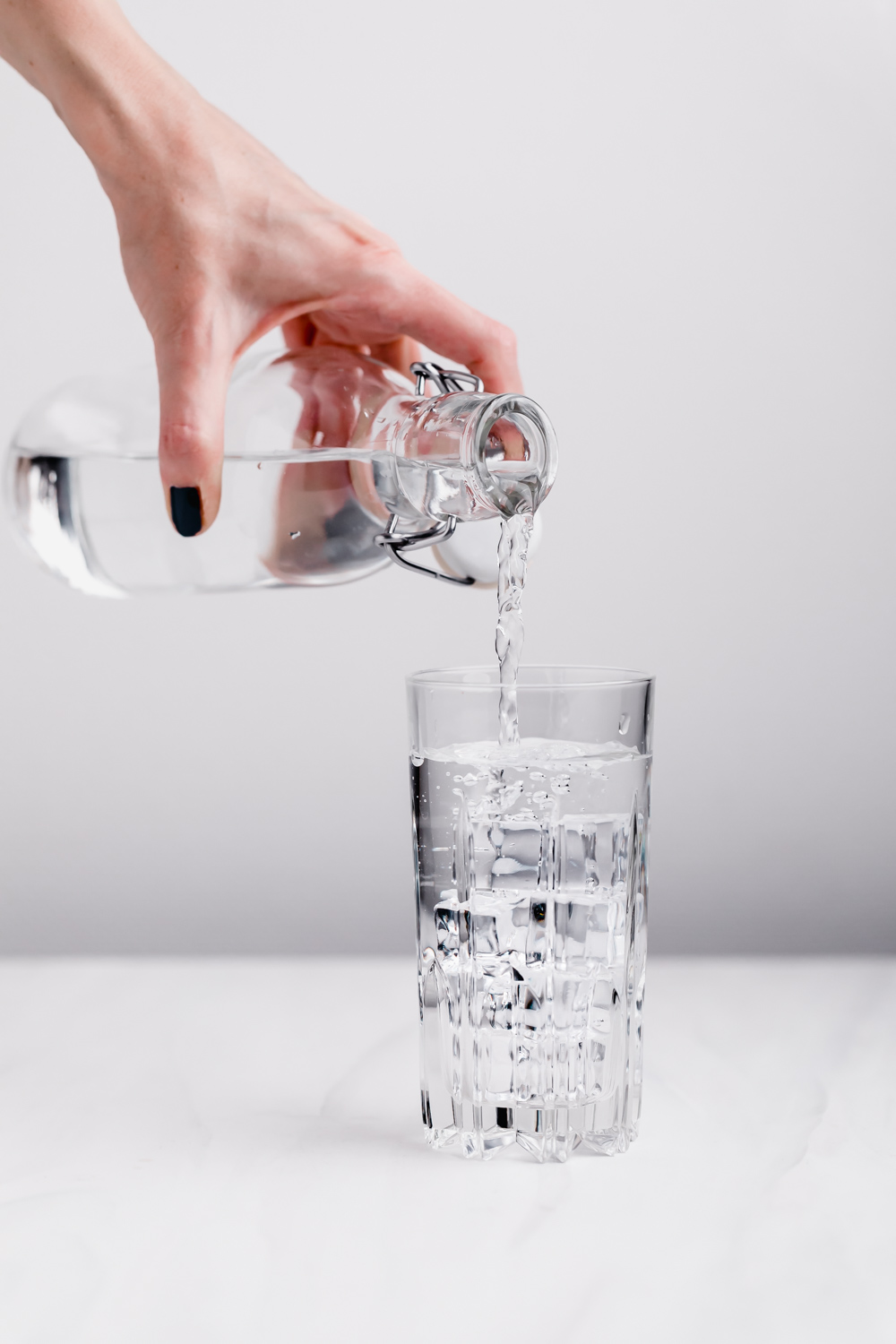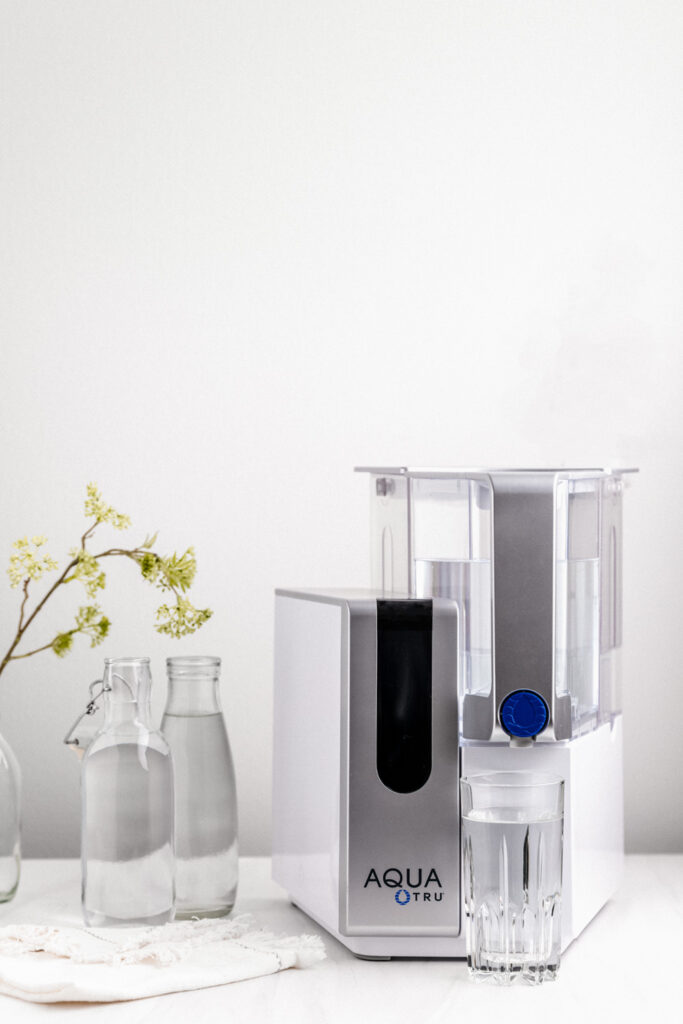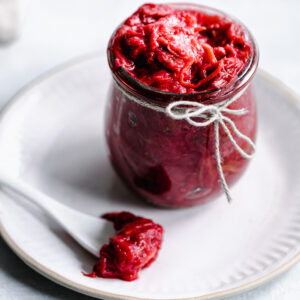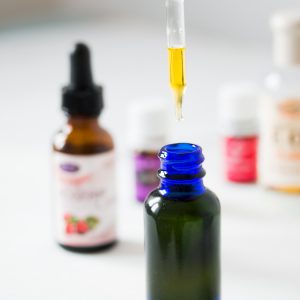There is one thing we all consume every single day: water. Last summer, I started thinking about the quality of my tap water and in this post I’m sharing my experiences with you in the hopes it might help you. I have finally found the right water filter for me and in this article I’m sharing my AquaTru water filter review with you.
This post is not sponsored by any of the brands I’m mentioning. I do have an affiliated discount code for AquaTru (see the end of this article). This post contains Amazon affiliate links.
Before I dive into this article, let me start by saying that I live in the heart of Europe with drinkable tap water. I did an Instagram poll asking whether you drink tap water, buy bottled water, or filter tap water. Most of you are filtering tap water or are buying bottled water. According to Google (where I live), drinking bottled water instead of tap water is purely based on ‘’the preference of the individual’s taste’’.
I did a bit more research and only found some information on sites like the World Travel Guide stating there are no medical risks posed by the tap water available to me here.
WHY I DON’T DRINK TAP WATER
For as long as I can remember, I have been filtering my water. Mostly because where I live (and have lived) the tap water was pretty hard water. Other than that, I never really thought of my tap water as being that bad so a little bit of filtering was all I needed.
Last summer, however, I changed my opinion. In the summer we, unfortunately, had to deal with a flood in Europe. The flooding in my region affected the tap water. A few hours after the flood the tap water turned into a light brown shade. I called the municipality and a friendly man told me there might indeed be a disturbance in the water deposits.
Usually, the water will clear on its own within a few hours. He told me I could drink the water again when it runs clear. My first thought: but what if there are still contaminants in there which are not visible?
The man was probably (and hopefully) right, but I just wasn’t convinced. I dove into a rabbit hole and ended up on the page of my local municipal where they legally have to disclose how your tap water is filtered and what you can find in your tap water.
Even if the minimal number of contaminants is ok is it still minimal if you drink a few liters of water a day like me? The water gets to my house through pipes, but I could not find any clear information about the pipes. Like, how old are those pipes? What are the regulations on that? How is the data of the quality of the water regulated? How often is it revised?
I had just one question but ended up closing my browser with more questions. My quest started to take my water filter more seriously.
HOW TO FILTER WATER
As I said, I filtered my water already. I have used both Brita and Berkey until I found AquaTru.
Brita
I have been using Brita for a few years. And while I think this can be a convenient option to filter out some contaminants, I think it mostly made my water a bit less hard/less limescale build-up.
The pros
- It’s compact. It’s also easy to install and changing the filter is also pretty straightforward. Although you need to keep the filter in water for a bit to prime.
The cons
- Brita doesn’t filter out all contaminants. An easy Google search will tell you exactly what is not filtered. In essence, activated carbon filters don’t remove all nitrates, dissolved minerals, or bacteria and viruses in water. It also doesn’t remove fluoride.
- There can be bacteria growth in the filter making the filtered water much worse than tap water ever could be (where I live).
- It’s made with low-grade plastic.
- The fact that the filter needs to be changed so often is such unnecessary plastic waste.
- The Brita is an expensive water filter. Both the Berkey and AquaTru are initially more expensive, bit cheaper in the long run.
Berkey
A Berkey filter works in essence like a Brita filter. Both require no electricity and use gravity to filter water. They both use a type of activated carbon to filter water. But that’s also where the comparison with the Brita stops.
The pros
- The Berkey elements filter out all contaminants such as chloramines, pharmaceuticals, pesticides, heavy metals, and other harmful bacteria and viruses in the water.
- It doesn’t remove the ionic minerals from the water, such as calcium and magnesium.
The cons
- There are different sizes. I have used a Royal Berkey and found it a pain to clean the tank.
- The priming of the filters can be challenging. And the filters need special attention when you leave for a holiday.
- You can’t see when the water container is full. So, unless you buy an accessory to measure the water level you run into the risk of your tank flooding over.
- I felt like with the Berkey I needed a special thing for everything. So an accessory to measure the water levels, and a Berkey stand for a glass to fit under the faucet, and so on.
- Berkey is not NSF certified (they run independent lab tests on their filters).
- If you want to filter out fluoride, you will need to buy an extra Berkey filter.
AquaTru
The AquaTru is just like the Berkey and Brita an on the counter water filter, but it works differently. The AquaTru is a patented ultra reverse osmosis technology. Reverse osmosis is often a system which needs to be installed under the sink. It’s quite a popular way of filtering water in a lot of households.
The pros
- The AquaTru filters out everything. All contaminants such as chloramines, pharmaceuticals, pesticides, heavy metals, and other harmful elements are filtered out from the water.
- It filters out fluoride without having to buy extra filters (such as is the case with Berkey).
- It removes more than 99% of pathogenic bacteria and viruses.
- A full performance data sheet is available (I could not find this for Berkey and Brita).
- It’s just as portable as a Brita, which is a huge plus (see photo for size comparison).
- With the purchase of one AquaTru set, you are done. There are no accessories or extra filters needed.
- Cleaning of the AquaTru is super easy.
- AquaTru is NSF certified.
- AquaTru uses BPA and BPS-free Tritan plastic for both water tanks.
- There is an easy dispensing button and also an easy-to-lift water container. If I need more water at once I can open the top lid of the clean water tank and pour out the purified water.
- I installed and changed the filters in 20 seconds.
The cons
- The AquaTru needs electricity. Since reverse osmosis involves pushing water through the filter in the opposite direction to the way it naturally flows, it requires energy (approximately $2.00 per year in electricity).
- It filters out everything so also the trace minerals.
- There is some water waste.
I will explain in a bit why these disadvantages are not disadvantages for me and why, at this moment, I prefer the AquaTru over the Berkey.
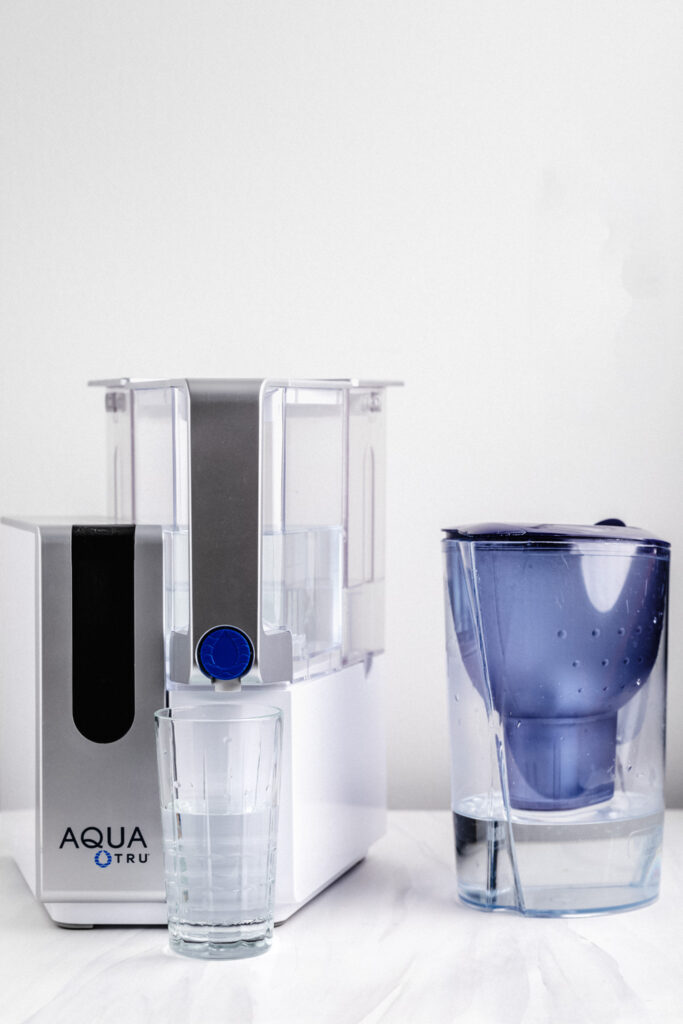
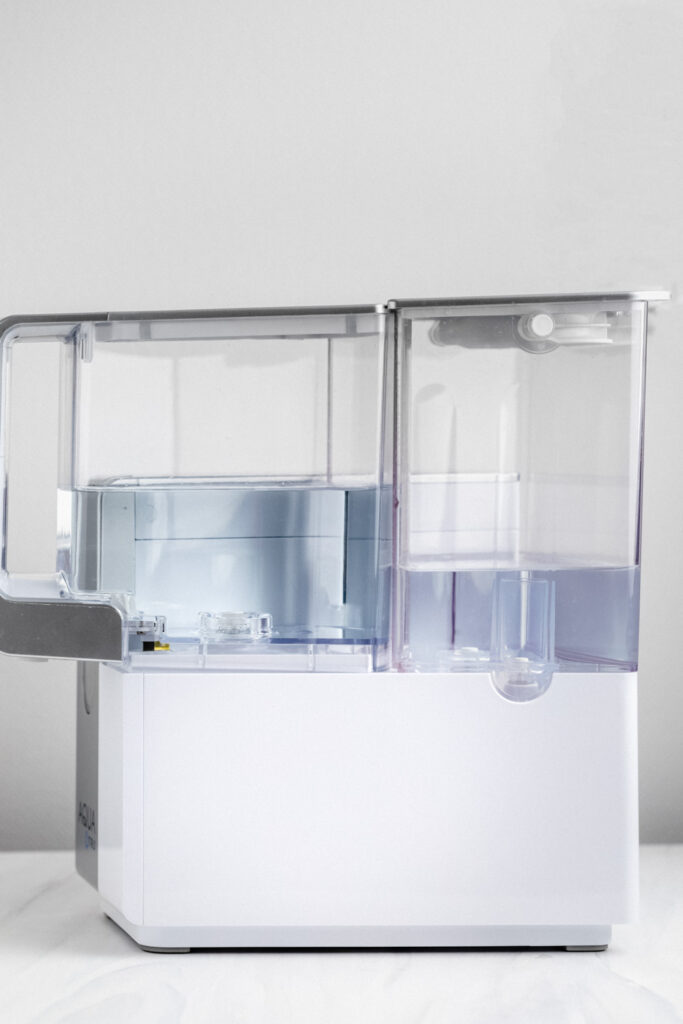
WHAT IS REVERSE OSMOSIS?
Chances are that if you buy bottled water, it is reverse osmosis water with some added minerals. Many big bottled water companies run their water through a filtration process that includes reverse osmosis.
Reverse osmosis works by passing water through a multi-stage filtration system with a semi-permeable membrane. This membrane allows not only to filter the water but purify it. I can attest, the water tastes better.
All the nasties such as chlorine, arsenic, lead, and others will be removed. The AquaTru uses a 4-stage ultra reverse osmosis technology verified to NSF standards which removes more than 83 contaminants.
WHY I FILTER MY WATER WITH AQUATRU
Firstly, AquaTru water just tastes amazing. It is pure and delicious. I was already a heavy water drinker, but I think that on average I drink about a glass more per day.
The AquaTrua is just as easy to clean and just as portable as a Brita, but a much better filter. It’s a full-blown under-the-sink reverse osmosis filtration system on your countertop.
The filters last long and don’t need special priming. New filters only need a few cycles through the AquaTru before usage.
The filter lasts much longer. As a comparison, the AquaTru reverse osmosis filter will last two years or 1200 gallons, whatever comes first. The final carbon VOC filter will last one year or 600 gallons, whatever comes first. The digital display will tell you when it’s time to replace it, so there is no guessing and/or calculating your water consumption.
A Brita filter (in my case) needed a replacement every five weeks. In general, the Berkey filter elements will last for 1,200 days or more than 3 years. However, the PF 2 fluoride filters by Berkey need to be replaced every 1,00 gallons or 1 year, whatever comes first. The Berkey does not have a display telling you when to replace it so you might need to do a bit of math work here or note down the date of purchase and take the average replacement estimation.
Cleaning the AquaTru tank is a dream compared to cleaning a Berkey tank. So light and compact, yet still being able to carry about 3 quarts of purified water. I have an extra carafe next to it filled with purified water. So easy!
Both tanks are transparent so I can see when it’s full. So, there is no way I can walk into a heavy water leaking accident.
To put it in a nutshell, the Aquatru is as portable as a Brita, but way more sustainable and it filters out everything from the water providing me with purified clean water.
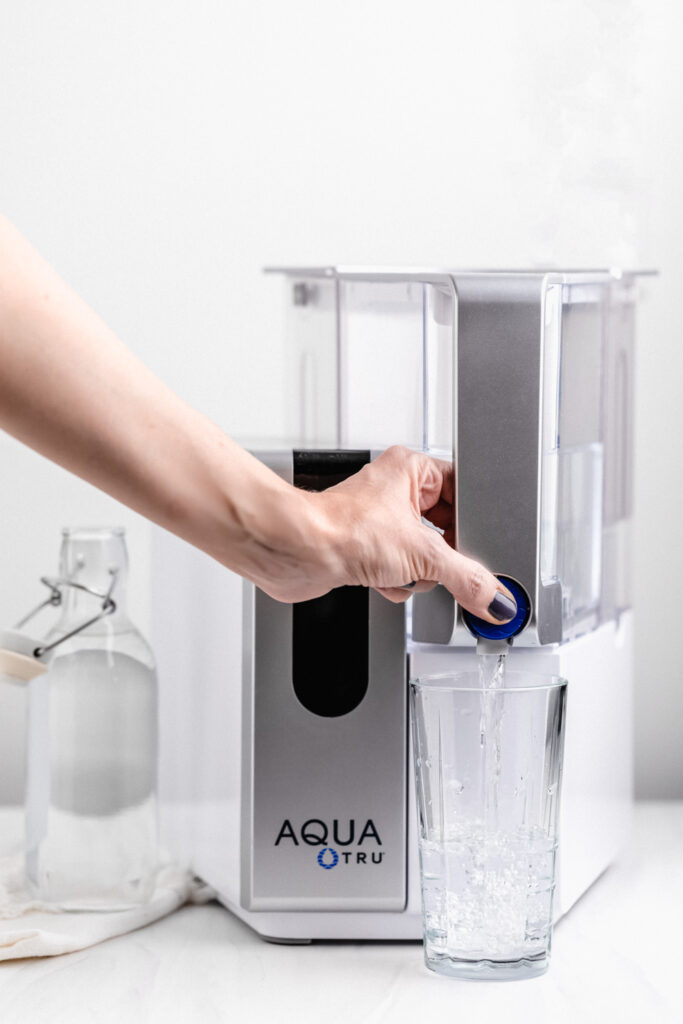

Trace minerals in filtered water
I have read a comment online saying that water without trace minerals (such as calcium and magnesium) is bad. I think this only applies if you rely on water only for trace minerals. Luckily, we also eat food containing minerals so I think it would be a bad idea to rely on tap water only for your daily dose of minerals.
Also, if this is an (albeit unsupported) worry, there are easy and inexpensive ways to add minerals back to your water. I do this when I think about it. But to be honest, I have been remineralizing my water even before using the AquaTru. But only if I think about it because I don’t rely only on my water for my essential minerals. AquaTru offers a bottle of these minerals that will last you forever, but you don’t have to use their brand.
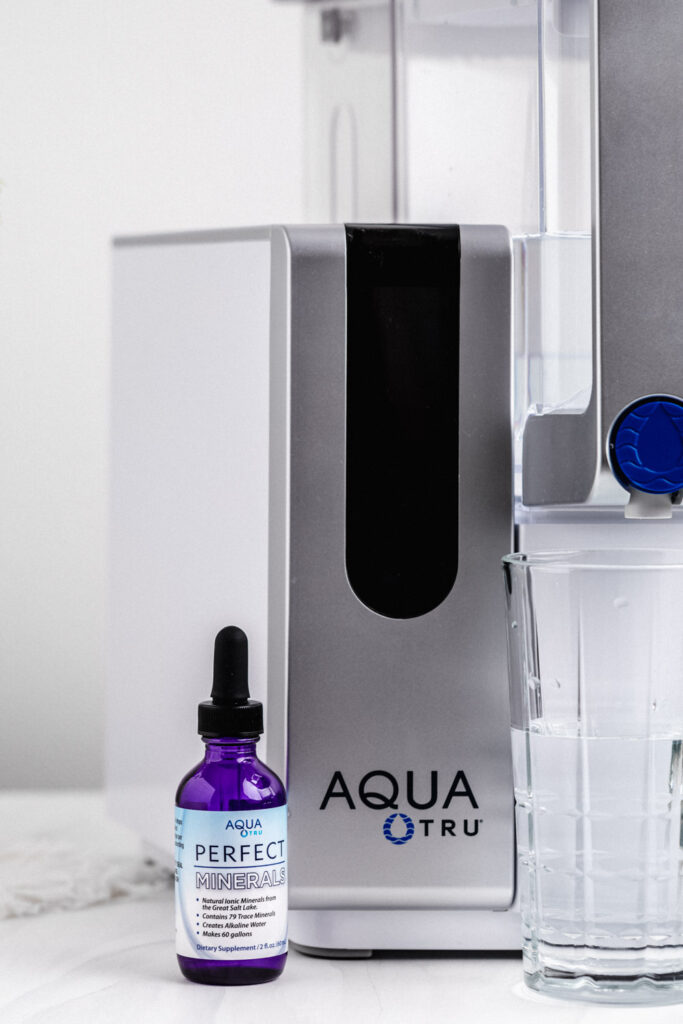
It’s a misconception that any reverse osmosis process will remove ALL minerals from water. AquaTru removes about 90% of minerals, but not all minerals.
Some biohackers (generally already very focused on minerals) add high-quality sea salt to their water. I don’t do this.
The other thing you could do is buy the mineral AquaTru carbon filter which will replace the regular carbon filter. This will create water with added minerals and a ph level comparable to high-quality bottled water from the store.
Here is what AquaTru said on their social media about this.
Most people prefer water with a low TDS (total dissolved solids) rating. AquaTru leaves the option to add minerals open to us. Some people prefer low mineral water since it has the ’’cleanest” taste. If AquaTru would put minerals back in (they offer this via a carbon mineral filter option), we would be removing this option for most people. Both options are available according to individual preference.
So, if you are concerned about the mineral content of filtered, purified water there are four options for you.
- Eat food with minerals and drink purified AquaTru water.
- You can also add a few drops of mineral solution to your filtered water.
- Or add some high-quality sea salt to your water.
- And lastly, instead of the regular carbon filter, you can get the filter that adds minerals and produces alkaline water. It’s called the AquaTru’s pH + mineral boost alkaline filter. It adds minerals, including calcium, potassium, magnesium, and sodium to the water.
Reverse osmosis and water waste
When people read reverse osmosis they think of water waste. This might be the case with regular under-the-sink reverse osmosis systems, but I find the amount of water wasted on a day by filtering my water with AquaTru not as shockingly high as I thought it would be.
Most under-the-sink reverse osmosis systems usually have a water waste of about 80%-90%. AquaTru only 25%.
Talking about waste. My Brita was a big plastic waste (the carbon filter is made with plastic and had to be replaced every 5 weeks) and the Berkey took so much more water to clean the entire tank. All in all, the water waste should not be stopping you if you are on the market for an AquaTru reverse osmosis water filter.
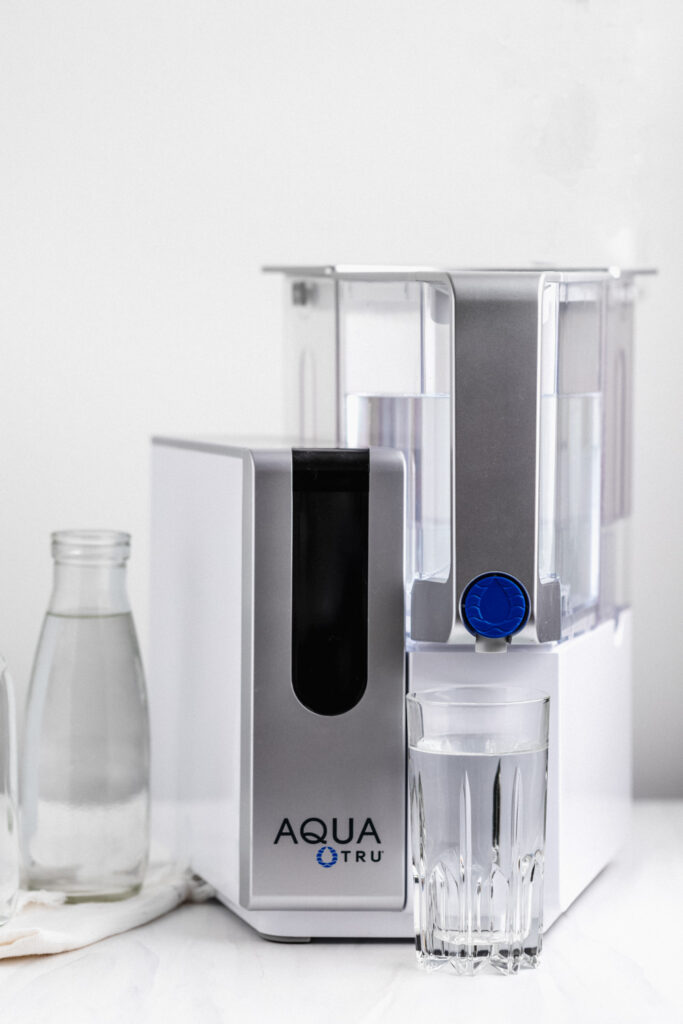
FINAL THOUGHTS – AQUATRU REVIEW
As you can read there are a few popular options available if you want to filter your water. I have tried and tested the three brands just discussed and I hope my insights may help you in your decision.
The decision to filter my water (like seriously) is something I’m very happy with. I don’t think my tap water is very harmful and I have faith there are regulations on the water pipes, but I feel safer knowing that I have control over what I drink every single day.
In this process, the AquaTru became my most loved kitchen appliance. It’s truly a joy to use it. I have control over my water quality, know what is and what is not in my water, the taste is amazing, it’s portable and I no longer waste my money (and tax the environment) with plastic filters every 5 weeks.
Reverse osmosis filter systems are some of the strongest, and most effective filters for filtering water since they remove 99% of the most dangerous contaminants in the water. This includes pesticides, herbicides, heavy metals, chlorine, hormones, and chemicals. The water is 100% lime- and chloride-free.
My advice is to do your research (be mindful of the source and the motives) and find a system that fits your needs and principles.
AQUATRU DISCOUNT CODE
I have reached out to AquaTru and have a discount code for 20 euros off per set with the code: AquaBianca.
If you are located outside of Europe the code will not work, but AquaTru is also available via Amazon.
For more lifestyle related articles, click here.
All photos and content are copyright protected. Please do not use my photos or text without prior written permission. Thank you!
